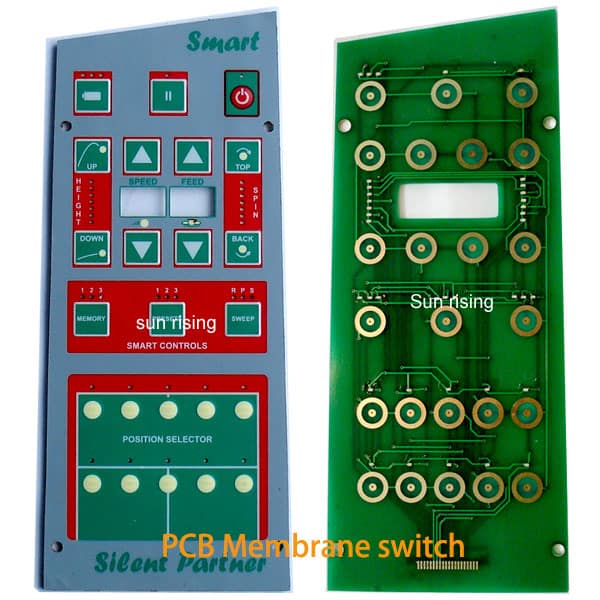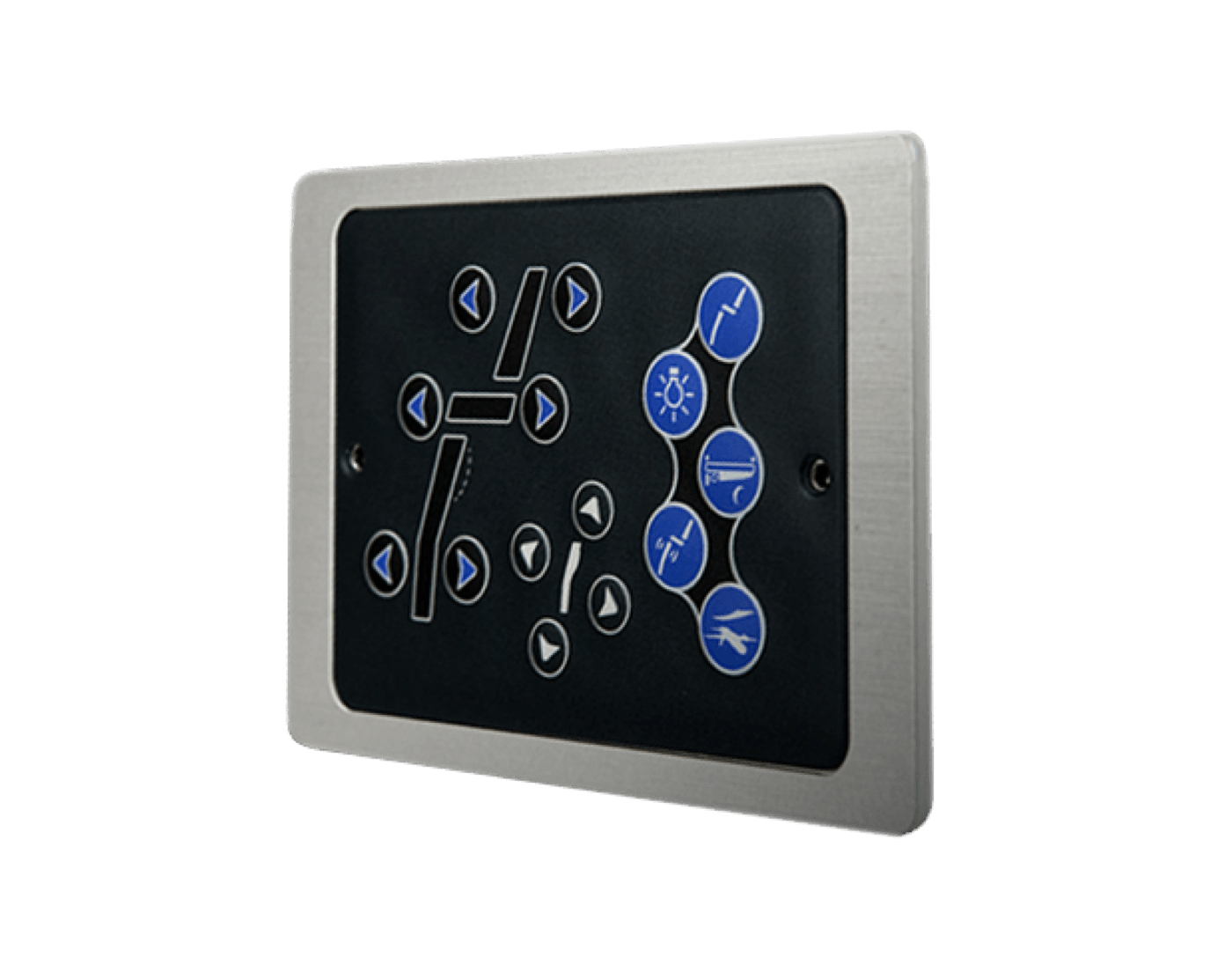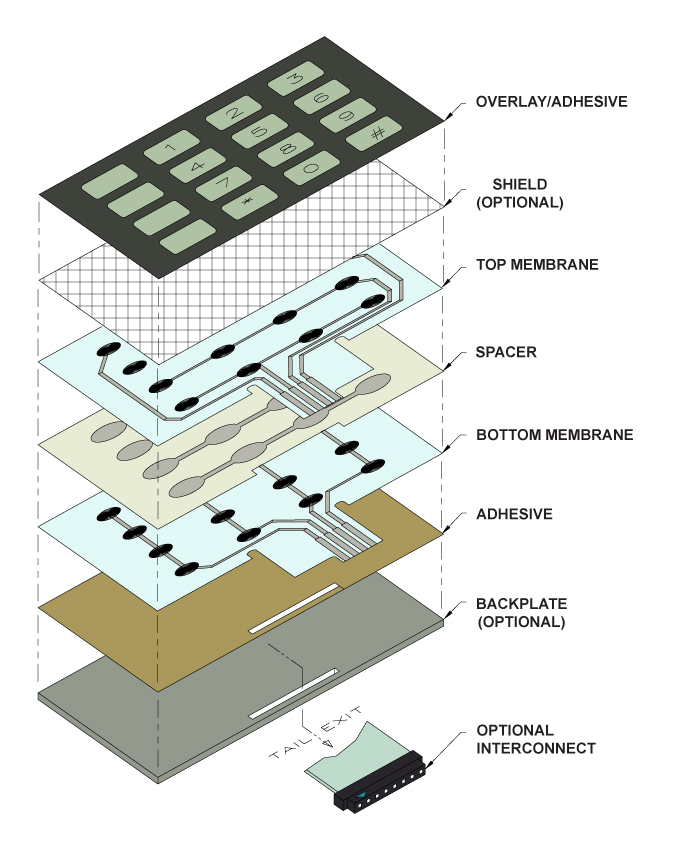Membrane Layer Change Technology: The Key to Reputable and Economical Interfaces
Membrane layer switch innovation has actually emerged as a pivotal component in the design of user interfaces, providing both integrity and cost-effectiveness throughout a varied array of applications. As we explore the multifaceted benefits of membrane buttons, their possibility for advancement elevates questions concerning future applications and evolving fads.
Comprehending Membrane Layer Switch Over Innovation
Membrane switch technology is an extensively utilized user interface service in different digital gadgets, using a smooth blend of performance and layout. This technology includes multiple layers of materials, usually being composed of a graphic overlay, spacer layer, and a circuit layer. The graphic overlay shows the interface aspects, while the spacer layer divides the circuit layer from the overlay until a customer turns on a button.
When stress is used to the overlay, the circuit layer finishes the electric circuit, sending a signal to the device. This device permits numerous configurations, consisting of tactile comments and backlighting options, enhancing customer interaction. Membrane switches are normally manufactured using long lasting products such as polyester or polycarbonate, ensuring longevity and resistance to ecological factors like dampness and dust.
The versatility of membrane changes enables their application in diverse industries, including medical gadgets, customer electronics, and industrial controls. Their portable style permits integration into space-constrained atmospheres, supplying an effective individual interface without jeopardizing visual allure. Comprehending the complexities of membrane layer switch modern technology is crucial for producers and developers seeking to create reputable and efficient human-machine interfaces.
Secret Advantages of Membrane Switches
While numerous user interface services exist, membrane changes offer unique advantages that make them a favored choice in numerous applications. Among the key advantages is their resilience; membrane layer buttons are created to hold up against rough ecological conditions, consisting of dampness, dirt, and temperature level fluctuations, making certain durable efficiency. This durability significantly minimizes the demand for regular substitutes, thereby decreasing total upkeep costs.

Moreover, membrane layer switches are lightweight and small, making them appropriate for applications where space is restricted. Their low-profile layout adds to a sleek appearance without endangering functionality.
Cost-effectiveness is also a remarkable advantage, as the manufacturing process for membrane layer changes has a tendency to be less costly contrasted to typical mechanical buttons. This cost, incorporated with their dependability and ease of installation, placements membrane changes as a practical service for a wide variety of markets seeking reliable and reliable individual interfaces.
Applications Throughout Numerous Industries
How site here do membrane buttons adapt to the varied demands of numerous markets? Membrane switch modern technology is progressively recognized for its adaptability, making it suitable for a wide range of applications across numerous industries.
In consumer electronics, membrane layer buttons give a portable option for push-button controls and home appliances, improving individual experience with instinctive layout. In addition, the commercial sector leverages membrane layer switches for machinery control panels, gaining from their resistance to severe atmospheres, such as dampness and dust.
Armed forces and aerospace applications likewise make use of membrane layer switches for their reliability and ability to stand up to severe conditions, guaranteeing functional performance in vital situations. Moreover, the food and drink sector takes on these switches for automated systems, where sanitation and convenience of operation are critical. Eventually, membrane buttons are customized to satisfy the special needs of each industry, proving their essential function in modern technology user interfaces
Layout and Customization Choices

In the realm of membrane button modern technology, style and customization alternatives play a critical duty in improving capability and individual interaction. These switches can be tailored to satisfy details operational demands and visual choices, making them functional elements in various applications.
One of the main modification options is the design of the button itself, which can be developed to fit one-of-a-kind customer interfaces and ergonomic factors to consider. By readjusting the shape, size, and arrangement of switches, manufacturers can produce instinctive layouts that assist in ease of use. In addition, the unification of various shades and graphic overlays permits branding and improved presence, making certain that users can rapidly identify functions.
Furthermore, membrane switches can be crafted with numerous tactile comments devices, such as raised buttons or audible clicks, to improve the individual experience. Various materials can additionally be picked for toughness and environmental resistance, dealing with factors such as dampness, temperature level fluctuations, and chemical exposure.
Eventually, the substantial layout and modification alternatives available in membrane switch modern technology encourage organizations to produce tailored remedies that not only meet useful requirements yet additionally straighten with their branding and operational requirements.

Future Trends in Membrane Switches
As membrane switch innovation continues to evolve, future patterns are significantly concentrated on improving individual experience and incorporating advanced performances. One substantial trend is read the full info here the assimilation of his explanation touch-sensitive and capacitive modern technologies into conventional membrane buttons. This development permits more user-friendly interface, giving tactile responses while keeping a streamlined style.
Another arising fad is making use of eco-friendly products, driven by the expanding demand for lasting production techniques. Makers are looking for to lower their carbon footprint by making use of recyclable substratums and low-impact inks, lining up with worldwide sustainability objectives.
In addition, the surge of the Net of Points (IoT) is motivating the consolidation of smart functions into membrane layer buttons. Boosted connection alternatives will certainly make it possible for tools to communicate with each other, enabling for seamless assimilation into wider systems.
Furthermore, improvements in printing innovations, such as digital printing, are enabling better layout versatility and modification. This allows makers to create complex layouts and dynamic shades cost-effectively.

Verdict
In final thought, membrane switch technology represents a crucial innovation in individual interface design, using considerable benefits in toughness, modification, and cost-effectiveness. As developments proceed to arise, particularly in touch-sensitive user interfaces and lasting materials, the capacity for membrane layer switches to enhance customer experience and functionality continues to be appealing.